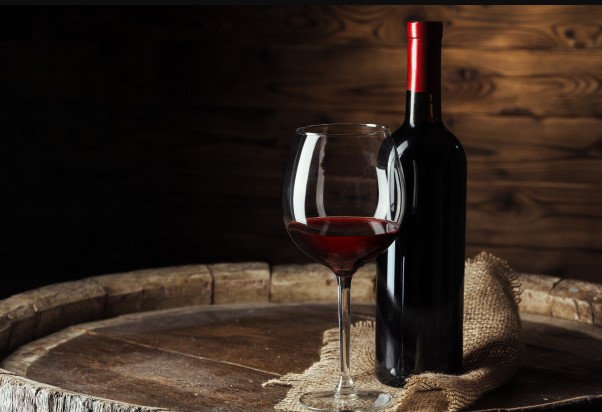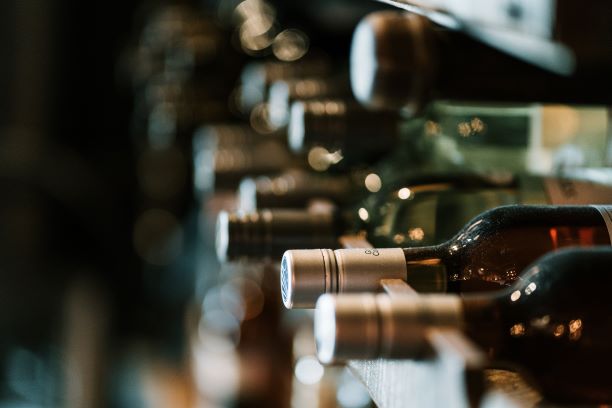
Wine aficionados often describe tannins in wine, but what are they?
Tannins are a group of astringent and bitter compounds called polyphenols found naturally in wood, leaves, bark, nuts, and some fruits, including grapes.
Tannins provide structure, texture, and mouthfeel in wines, and are responsible for “dry tongue” that accompanies some red wines. Tannins are more about how it “feels” on the palate rather than influencing aroma or flavor.
What are Tannins
Tannins are naturally occurring chemical compounds or polyphenols and are found in tea, coffee, chocolate and wine. The tannins in wine come from the skins, stems, and seeds of the wine grape and from aging the wine in oak barrels.
Tannins molecules vary in shape and size and bind to proteins in the mouth triggering an astringent, sometimes bitter, drying sensation. Red wines typically pair well with red meats because the tannins bind with the proteins in the meat, making them less astringent on the palate.
Tannin’s primary role in nature is to protect a plant’s seeds and make unripe fruit unpalatable as to discourage animals from eating it.



Sources of Tannins in Wine
Tannins in wine come primarily from the grape skin, seeds, and to a lesser extent the stems of the grapes. Tannins can also be added through aging the wine in oak barrels or additives. During fermentation, the juice, skins, seeds, and sometimes stems macerate together. Maceration is the process of soaking crushed grapes, juice, seeds, and stems in a barrel to extract color, aroma, and tannins.
As the yeast consumes the sugars in the grapes and alcohol is produced as a byproduct, color and tannin are released into the wine.
The longer the skins and seeds macerate in the grape juice during and after fermentation, the more tannin will dissolve into the juice and be included in the finished wine.
White wine grapes are pressed immediately after harvest and therefore the juice has minimal contact with the skins and seeds during fermentation. Because of this minimal contact, white wines tend to have significantly fewer tannins than red wines.
Tannins can also come from the oak barrels where the wine absorbs the tannins from the oak. Different types of wood impart different levels of tannins and flavors.
Are Tannins Good for You?
Not only do the antioxidants in tannins protect the wine from oxidation, it may be good for you also. A study by the European Journal of Nutrition found the antioxidants in tannins help reduce oxidative stress and free radical damage to our cells.
The University of Memphis study shows antimicrobial properties in tannins increase our immune response.



Tannins do not Make a Wine “Dry” – What is a Dry Wine?
Tannins are commonly confused with the level of dryness in wine because tannins can dry your mouth out. Dryness in a wine reflects the amount of residual sugar in a wine not the amount of tannins.
What do Tannins Taste Like?
Tannins are an essential description for wine tastings and are best described as the tactile sensations they produce, referring to the bitterness and astringency of a wine. The taste of tannin can be described as drinking tea that has been steeped a little too long.
It’s not the acid in a red wine that contributes to a wine’s astringency, and bitterness, it’s the tannins. Generally, the drier the mouth feels after sipping, the more tannins there are in the wine. Tannins bind with other proteins in your mount and create a characteristic astringent, tongue-coating sensation.
Tannins are one reason why you aerate some red wines or allow them to “breathe” before drinking it. The air contact with the wine softens the tannins. This is particularly important in young red wines who have not had the time to soften up with age.
Remember, bitterness is a taste characteristic, while astringency is a textural sensation.
Longer Shelf Life
Typically, wines with more tannins benefit from longer shelf life.
Red wines with minimal tannin levels tend to degrade sooner because they are less stable. Those with a high concentration of polyphenols and a deep color usually have a longer shelf life. However, the quality of the grapes, any additional additives, and what happens in the vineyard will also greatly influence the longevity of a wine.
Over time the polyphenols combine and become longer chains reducing their reactive surface and eventually fall out of suspension settling to the bottom of the bottle.
This causes tannins in wine to become more subtle over time and changes mouthfeel. This is one reason aged wines can be expensive and coveted.
Tannin Levels
Tannin levels vary between different grape varietals, climate variation, amount of water, production technique, soils, vineyard management, type of barrels or containers, additives, and other factors.



High Tannin Red Wines
Many high-tannin wines are described as “full-body” red wines. The following red wines typically have higher tannin content:
Bordeaux Red Wines
Cabernet Sauvignon
Malbec
Tuscan Wines
Sangiovese
Shiraz/Syrah
Low Tannin Red Wines
The following red wines are produced from thinner skinned grapes and typically have lower tannin content:
Pinot Noir
Gamey
Grenache

